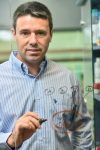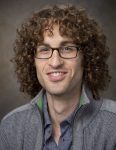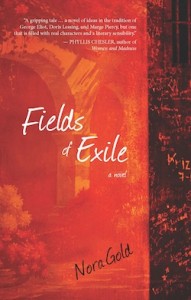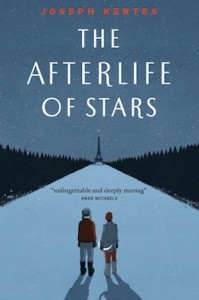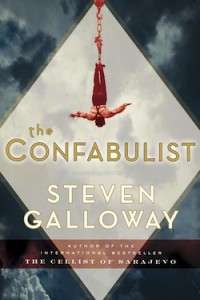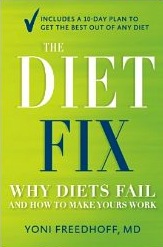Jordan Sloshower (photo from Jordan Sloshower)
The use of psychoactive plants and mushrooms for sacramental and religious purposes has been widespread throughout the world’s cultures for centuries. More recently, in the 1950s and 1960s, academic centres investigated the potential therapeutic uses of psychedelic compounds – primarily lysergic acid diethylamide (LSD) – to treat forms of mental illness and addictions. After producing thousands of papers, the field came to a halt in the 1970s, due to the “war on drugs” and the classification of psychedelic drugs as a Schedule 1 drug in the United States. Nonetheless, the past 10 years have seen a resurgence of interest in the field of psychedelic science.
In the last decade, research has resumed at prominent universities, such as Johns Hopkins University, University of California-Los Angeles and New York University, where clinical trials have examined the use of psilocybin (the psychoactive component of “magic mushrooms”) to treat cancer-related end-of-life anxiety, as well as addiction to alcohol and tobacco. And, a recently formed group at Yale University – the Yale Psychedelic Science Group (YPSG) – is exploring the science behind such research.
YPSG was formed with the aim of reviewing and discussing academic research in the psychedelic sciences via examining academic articles and papers, as well as hosting leading scholars in this field from across the country. The group is working to host an interdisciplinary forum in which clinicians and scholars from across Yale can learn about and discuss the reemerging field of psychedelic science and therapeutics.
One of the leaders of this resurgence is Winnipeg-born and -raised Jewish community member Jordan Sloshower, who is currently a second-year resident physician in Yale’s psychiatry program.
“I first thought I was going to do infectious disease, which is a more typical path for someone like myself interested in global health,” Sloshower told the Independent. “But I found that, clinically, I was most interested in interpersonal relationships, so social dynamics and psychiatry was feeling like a better fit.
“What actually happened was I was able to go do a psychiatry elective in Peru – both in Lima and in a smaller city in the mountains – and, for six weeks, I got to interact with different aspects of their mental health care system there. It was really my first exposure to what we call ‘global mental health,’ and I learned that this is actually a very vibrant field.”
Sloshower found that mental health was a hugely underserved area, with not only a lack of access to care, but with human rights abuses. With a lot of work needing to be done in the field, he decided to combine his interest in global health with his clinical interest in psychiatry. This led to his working in Nepal’s mental health system as well, at the end of medical school.
Regarding the field of psychedelic science, Sloshower dates its inception back to when Albert Hoffman synthesized LSD.
“Now, the way I think of it is as a broad interdisciplinary study of how these molecules act biologically, socially and economically,” he said. “I think there are also political, arts and anthropological angles. I think the term psychedelic still brings up thoughts of art and music from the ’60s. It’s a broad term.”
According to Sloshower, the term psychedelic means “minds manifesting,” which some refer to as “hallucinogen.” In context, this refers to compounds that cause perceptual alteration.
The province of Saskatchewan, as it happens, was one of the leaders investigating LSD for the treatment of alcoholism and cancer-related anxiety. In Europe, psychedelic drugs were used for psychotherapy. Thousands of papers were published on this until, Sloshower said, “things got shut down when psychedelic drugs were classified as illegal drugs.”
Psychedelic drugs went from being perceived as potential wonder drugs to something awful, and then just disappeared. Then, about 10 years ago, Dr. Rick Strassman in New Mexico did a study looking at dimethyltryptamine, a psychedelic drug found in many species of plants as well as in our own bodies.
“There’s a huge need for new treatments that work rapidly in a sustained way, and we need treatments that are not toxic,” said Sloshower. “So, it makes a lot of sense that we should look at these drugs, which actually have safety profiles that were demonstrated to be excellent back in the original wave of research and, increasingly, in controlled settings.
“There have been several trials using psilocybin, which is the active ingredient in magic mushrooms to treat cancer-related anxiety, which, again, picks up from the ’60s. There’s been a promising study with psilocybin to treat alcohol and nicotine dependence.”
While Sloshower said he is not an expert in the matter, he was willing to explain the basics of how these compounds work on the brain. He said that psychedelic drugs activate a subtype of serotonin receptor in the brain and that “serotonin is one of the key neurotransmitters in mood, attention and a range of different things.”
He said, “Typical antidepressants usually act on the serotonin system as well. One potential mechanism of how psychedelics exert peculiar effects on thought and perception is by interrupting something called ‘the default mode network,’ which is kind of like a neural correlate of the ego. It’s a network of neurons that fire together in your baseline consciousness when you’re doing self-referential thinking. In people with depression who have a lot of ruminant thoughts, you see an increased activation of the default mode network and, with both the use of psychedelics and mindfulness practice, you actually see a decrease in activation of the default mode network.”
Among the speakers YPSG has hosted is a speaker from Johns Hopkins who discussed his work using psilocybin to treat tobacco addiction. Another expert, from NYU, was part of the trial done on psilocybin for cancer-related end-of-life anxiety. The results from both studies look promising.
Sloshower anticipates that some Canadian universities will soon become more interested in researching psychedelics. “Actually, the Canadian medical journal, I noticed on the front cover a few months ago, had psychedelics on it,” he said.
When asked about any possible connection between psychedelics and the increased interest in medical marijuana, Sloshower said they are not explicitly connected, although both are part of a search for new therapeutic approaches.
“From my point of view, it’s not so much a matter of the drugs (antidepressants) being overused as much as it is that the drugs don’t work as much as we’d like,” he said. “In a lot of cases, we don’t have great treatment. In depression, for instance, the medications either work partially, take a long time to start working or have a lot of side effects.
“In these cases, the treatments we have aren’t really adequate. We need new ones. We don’t really have good drugs for substance use disorders either. Actually, something that’s been interesting with psychedelic drugs is that the model being proposed, unlike typical antidepressants, is based on a very limited number of drug exposures over a very short period of time.”
The proposed model includes providing treatment in clinics only, with people requiring only one or a handful of drug-therapy sessions linked with psychotherapy, as studies have shown both rapid-acting and prolonged effects of psychedelics.
As for the cancer anxiety research, it has shown improvement in patients’ mood six months after having received a single dose of psilocybin.
“That’s why I think there’s a lot of interest,” said Sloshower. “I don’t think it’s going to be a miracle, but another tool we’d have alongside other treatments we already have.”
Rebeca Kuropatwa is a Winnipeg freelance writer.

